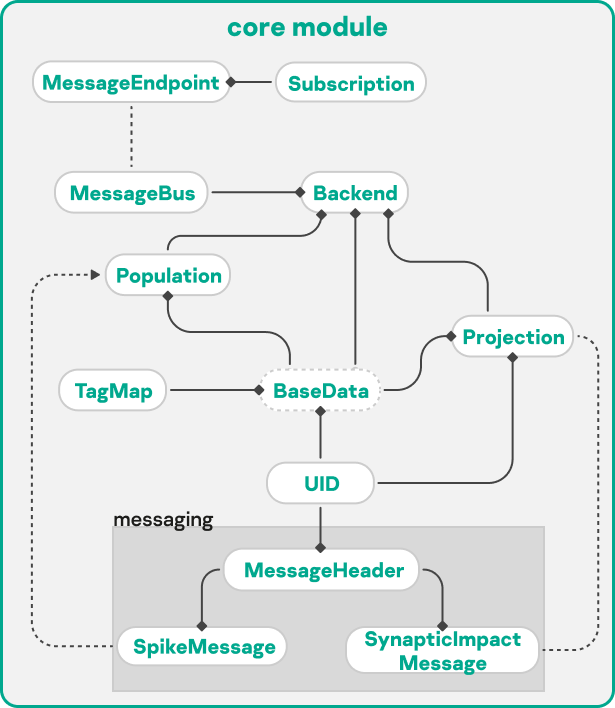core module
The core module provides support for backends. The core module provides the classes required for interacting with backends and performing application tasks.
The table below contains descriptions of the module components.
The core module components
Component |
Description |
|---|---|
Base class for specific backend implementations. |
|
Structure that implements a wrapper for the Backend base class. |
|
Structure defining a set of base data. |
|
Class implementing a generator of unique IDs. |
|
Class implementing an interface for the message bus. |
|
Class implementing an interface for the message bus endpoint. |
|
Set of classes that implement neuron containers of the same model. |
|
Set of classes that implement synapse containers of the same type. |
|
Set of classes that implement a message subscription. |
|
Class implementing an interface for the tag dictionary. |
|
Class defining unique identifiers. |
|
Class that implements hashing of UIDs. |
|
Class that implements the interface to the UID of the Boost:Uuid library. |
|
Namespace that contains message interfaces. |
The figure below shows how the module components interact.
In the Kaspersky Neuromorphic Platform, the BaseData structure contains basic information about an object and includes UID and TagMap. The BaseData structure is used in the following classes: Projection, Population, and Backend. Therefore, each of them has a UID and a set of tags with the TagMap values.
The Population and Projection classes receive and send messages that are implemented in the classes of the messaging namespace. Messages contain the sender's UID in the header. Message exchange is implemented using the functions of the Backend class, which stores the MessageBus and MessageEndpoint classes. The MessageBus creates MessageEndpoint and interacts with them by exchanging messages. Each MessageEndpoint has a container of the Subscription class.

Diagram of interactions between components in the core module
